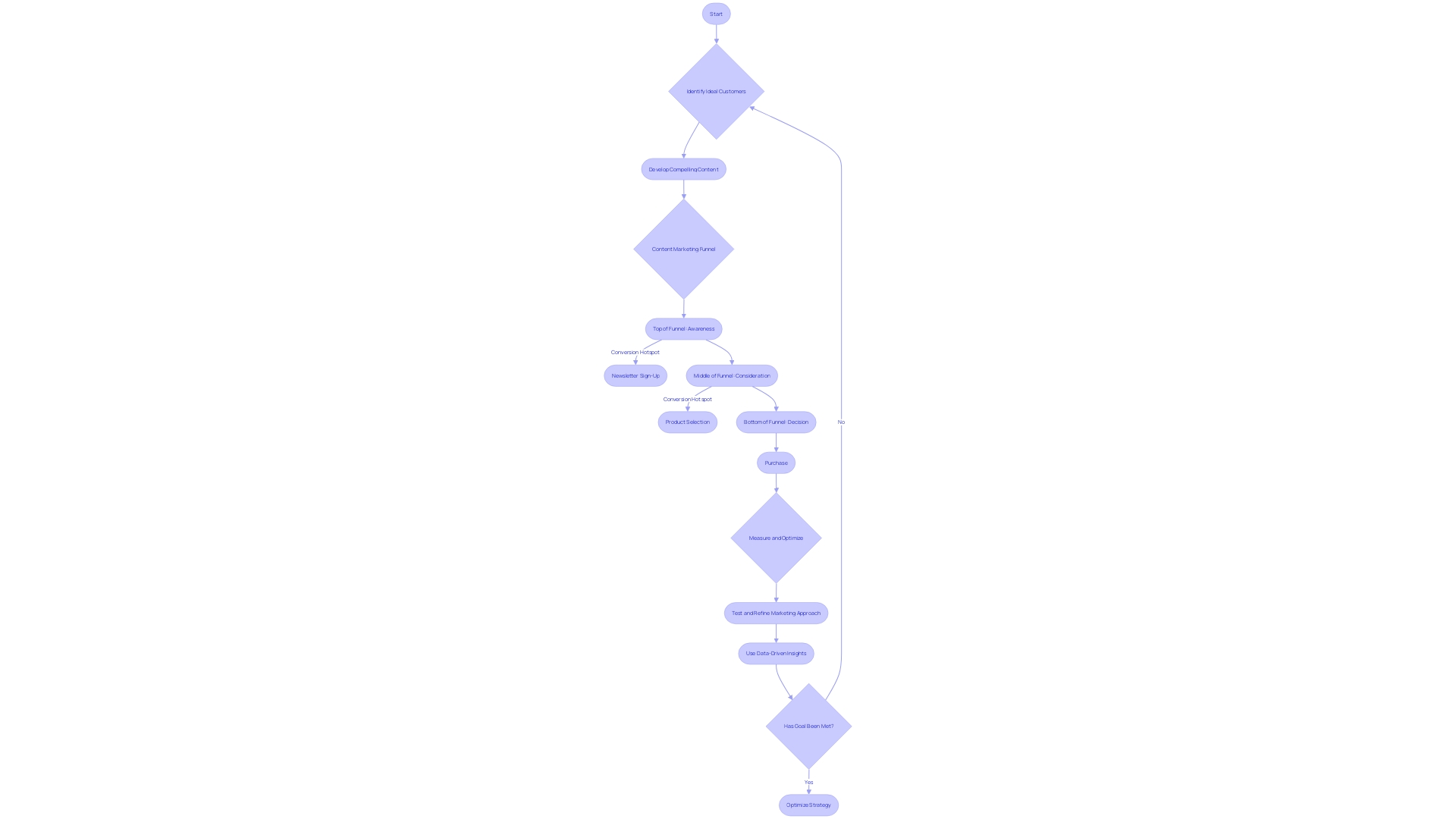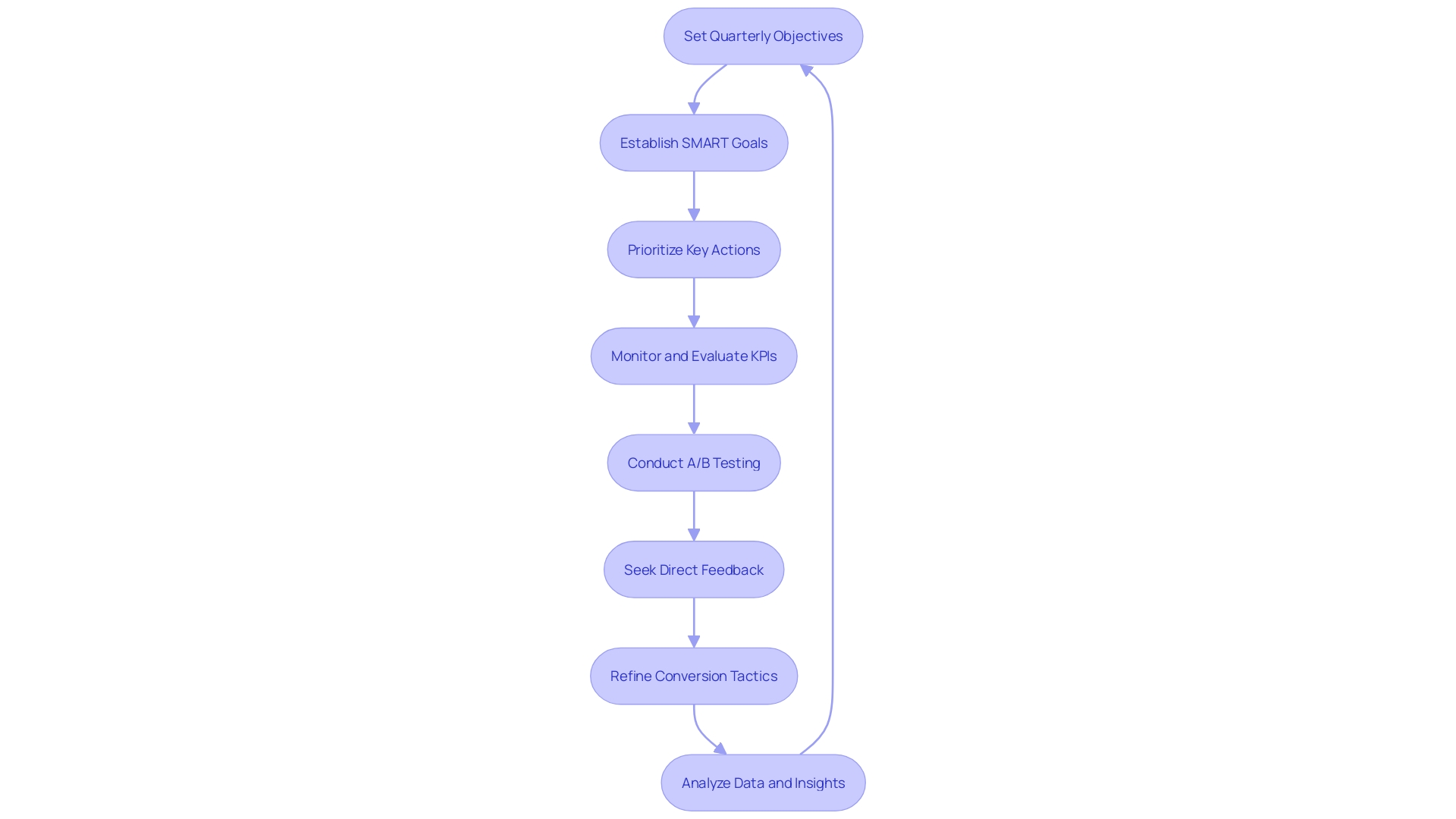Introduction
To elevate a business from merely attracting leads to actually sealing deals requires a conversion strategy deeply interwoven with the company's strategic vision and competitive strengths. In this article, we will explore the importance of a conversion strategy and how it can be effectively implemented.
We will discuss the elements of an effective conversion strategy, the creation of a conversion strategy framework, practical examples of conversion strategies in action, and the tools and techniques that can be used to optimize conversion rates. Additionally, we will highlight common mistakes to avoid and provide insights on measuring success and optimizing your conversion strategy. If you are a CFO looking for practical advice and solutions to improve your conversion rates and drive tangible growth for your business, this article is for you.
Understanding the Importance of a Conversion Strategy
To elevate a business from merely attracting leads to actually sealing deals requires a conversion strategy deeply interwoven with the company's strategic vision and competitive strengths. This encompasses a sequential effort where each innovation is aligned directly with the organization's growth objectives and its distinctive benefits.
For example, a firm might observe customer behavior shifts to pinpoint exact conversion opportunities by asking pertinent questions about how external changes affect their clientele and, consequently, their business model. Embarking on this journey involves recognizing precise moments that signal the need for adjustment – such as dips in sales, customer feedback, or emerging competition.
Let's consider the Jackery Solar Generator 1500's online retail strategy, where different platforms showcase varying degrees of product detail. A strategy that focuses on providing comprehensive information, as seen on Jackery's main site with its elaborate Features section complemented by visuals and statistics, can more effectively convert browsing prospects into purchasing customers by directly addressing their informational needs. Moreover, reflecting on Bill Bernbach's celebrated Volkswagen campaign – which turned the brand's apparent weaknesses into a unique advantage – serves as a poignant reminder that a successful conversion strategy hinges on the foundational element of transforming challenges into compelling selling points. Through a clear understanding of strategic priorities, keen monitoring of changes in customer behavior, and the art of utilizing a business's unique offerings, companies can craft a conversion strategy that not only captivates potential buyers but also translates into tangible growth for the business.
Elements of an Effective Conversion Strategy
In devising an effective conversion strategy for your target audience, begin by clarifying exactly whom you aim to reach. This step is crucial and often simplified by the term "customer," though in contexts such as Effective Altruism (EA) organizations, the term could extend to beneficiaries like undergraduate machine learning students.
Next, refine your unique value proposition to ensure it's not only clear but also directly addresses the needs and desires of your intended audience. When optimizing your conversion funnel, concentrate on the smooth progression from awareness to purchase by removing hurdles that could deter potential customers.
An imperative element is the Call-to-Action (CTA); it must be strategically crafted to be both compelling and persuasive, steering prospects towards making a purchase or engaging further with your company. Moreover, splitting your audience into distinct segments and personalizing the approach to each can considerably elevate your conversion rates. It's not merely about recognizing different customer groups but about delving into their unique pain points and needs to craft more resonant messages and offers. To gauge the effectiveness of these efforts, identify and track specific Key Performance Indicators (KPIs) that reflect the success of your conversion strategy.
Creating a Conversion Strategy Framework
Commence with a crystal-clear marketing plan: simplify the approach by addressing key questions that pin down your target audience, such as an undergraduate student studying machine learning. What key message do you wish to deliver to them, and what is the optimal medium?
Construct a user-oriented marketing funnel: visualize the customer's journey, from gaining awareness to making a purchase. A fundamental three-stage funnel will guide them through the top, middle, and bottom sections, aligning with varying stages like attracting interest, fostering engagement, and driving purchases.
Distinguish conversion hotspots: identify crucial points within the marketing funnel where prospects advance forward. These could be actions like newsletter sign-ups or product selections.
Leverage varied insights for strategy formulation: employ data analysis and customer feedback to pinpoint areas necessitating enhancement and to shape your marketing strategies. Pursue both breadth and depth by considering the diverse needs and pain points of your clientele, such as the distinct requirements a doctor may have versus a teacher when seeking the same product. Test and refine your approach: deploy strategies tailored to each conversion point, conduct A/B testing, and iteratively refine your tactics based on performance metrics. Measure, analyze, and optimize: diligently track the efficacy of your strategies and continually optimize using data-driven insights, thus ensuring a relentless pursuit of enhanced conversion outcomes.

Practical Examples of Conversion Strategies
Taking a closer look at how businesses implement conversion optimization strategies sheds light on their adaptability and focus on customer engagement. For instance, a seasoned player in the digital payment solutions space, Nets, hailing from Copenhagen with over 50 years of expertise, delivers a prime example. They refined their user experience by converting complex technical data into compelling, user-friendly content.
This helped motivate their clients to self-explore information, consequently simplifying the client's journey and potentially increasing conversions. Likewise, instructional designer Karmela Peček highlights the transformation in onboarding processes that eWyse Agency performed for organizations dealing with stringent financial sector regulations. These changes underscored the crucial role of clear communication in effective online training, which ultimately serves to enhance user engagement and conformance to international standards.
E-commerce businesses prioritize user experience optimization, personalization, and checkout process streamlining. As outlined in expanded e-commerce models, understanding the audience and crafting niche strategies are pivotal. Moreover, a SaaS provider may implement strategies ranging from free trials to engaging content that addresses customer pain points, in order to build trust and drive conversions.
Similarly, the process of generating leads necessitates creating persuasive landing pages and leveraging remarketing tactics to re-engage prospects. Each of these scenarios demonstrates the agility of companies in tailoring their strategies to meet industry-specific demands, echoing the insights shared by Eric Ries about pivoting business strategies according to customer and market needs. From the editing of technical data for accessibility to the strategic shifts in delivery methods as businesses expand, these examples show the dynamism required in conversion strategy and the importance of orienting the company around evolving customer behaviors and preferences.
Tools and Techniques for Conversion Strategy
To deploy a robust conversion rate optimization (CRO) plan, several key methodologies are crucial. Data analytics technology, particularly, is vital for ameliorating CRO, having been an important practice since the inception of the internet.
Effective use of online analytics tools, such as Google Analytics, allows firms to obtain actionable insights, observing user engagement down to individual city sizes, which can lead to more targeted conversion strategies. A/B Testing is another cornerstone, playing an integral role in the refinement process.
By assessing different webpage versions, businesses pinpoint enhancive modifications, thus elevating conversion rates. While this can be resource-intensive, the insights gained from comprehensive performance metrics based on semantic keyword groups are invaluable.
Landing pages, the concierge of web conversions, must be compelling and visually striking. The focus on persuasive copy and strategic design elements fine-tunes visitor experience, effectively ushering leads through the conversion funnel.
Moreover, the integration of Email Marketing Automation in a firm's marketing stack is essential. Not only does it facilitate communication with leads through customizable and scalable campaigns, but it also delivers insights through CRM, CMS, and other marketing systems, allowing for effective nurturing of potential conversions. Lastly, enhancing the user experience (UX) is non-negotiable. Utilizing UX design principles is pivotal to crafting an intuitive and attractive route for users, ultimately influencing conversion rates positively. Collectively, these tools and techniques empower businesses to measure, optimize, and continually advance their conversion strategy, ensuring alignment with the organization's business model of creating, delivering, and capturing value.

Common Mistakes to Avoid in Conversion Strategy
Creating a potent conversion strategy requires sidestepping a few common pitfalls that thwart marketing success. A pivotal error to elude is ambiguity in conveying your value proposition.
Prospects must grasp the distinct advantages your product or service presents without confusion, thereby fortifying conversion likelihood. Moreover, unnecessarily intricate conversion pathways deter potential action from prospects.
Prioritize a streamlined pathway to enhance conversion prospects. Another oversight is neglecting the power of data and analytics.
The antidote is not assumption but precise data to guide your strategies, scrutinize campaign performance, and unveil optimization opportunities. Additionally, the surge in mobile device usage mandates optimization of websites and landing pages for fluid mobile interaction, ensuring an unblemished consumption experience across varying platforms. Lastly, avoid the one-size-fits-all approach, as personalization is key. Tailor your communication to meet the distinct needs and pain points of different customer segments, which in turn elevates the conversion rates.
Measuring Success and Optimizing Conversion Strategy
To effectively measure and enhance your conversion strategy, begin with setting quarterly objectives. This approach involves carving the year into four distinct periods and establishing SMART goals for each, ensuring your marketing efforts are sharply focused and progress is tangible. Typically, centering on three principal objectives per quarter keeps your strategies clearly aligned with desired outcomes.
During this process, prioritize key actions such as lead form submissions or calls generated from ads, as these are the drivers behind achieving your business aims. Monitor and evaluate your KPIs frequently, encompassing conversion rates, website interactions, and customer journey analytics to extract actionable insights. For a robust analysis, take inspiration from the Jackery Solar Generator 1500's marketing, which offers comprehensive product information paired with visual and statistical data to guide prospective customers—a practice that bolsters trust and promotes informed decision-making.
Embrace the power of A/B testing; it's an indispensable tool for fine-tuning your conversion elements. Iteratively test various elements—from landing pages to CTAs—to discern what captures your audience's attention most effectively. Additionally, seek direct feedback from your customers through surveys and user testing.
These insights will reveal user experience pain points and highlight where your conversion strategy can be improved. Refining your conversion tactics is a continuous, iterative process that should be grounded in the data and insights you gather. By systematically measuring, analyzing, and optimizing, you create a feedback loop that propels your conversion strategy towards greater effectiveness and aligns with your overarching business goals.

Conclusion
In conclusion, a successful conversion strategy is crucial for businesses to move beyond attracting leads and close deals. Key elements include defining the target audience, refining the value proposition, optimizing the conversion funnel, personalizing approaches, and measuring success through KPIs.
Creating a conversion strategy involves developing a clear marketing plan, constructing a user-oriented funnel, leveraging insights, testing and refining approaches, and measuring and optimizing outcomes. Examples show the adaptability of businesses in tailoring strategies to industry demands, and tools like data analytics, A/B testing, and UX design enhance conversion rates.
To avoid common mistakes, businesses must ensure a clear value proposition, streamlined pathways, data-driven decision-making, and personalized communication. Measuring success involves setting goals, monitoring metrics, utilizing A/B testing and feedback, and refining tactics. Implementing a comprehensive conversion strategy and aligning it with business objectives drives tangible growth and captures customer value effectively.




